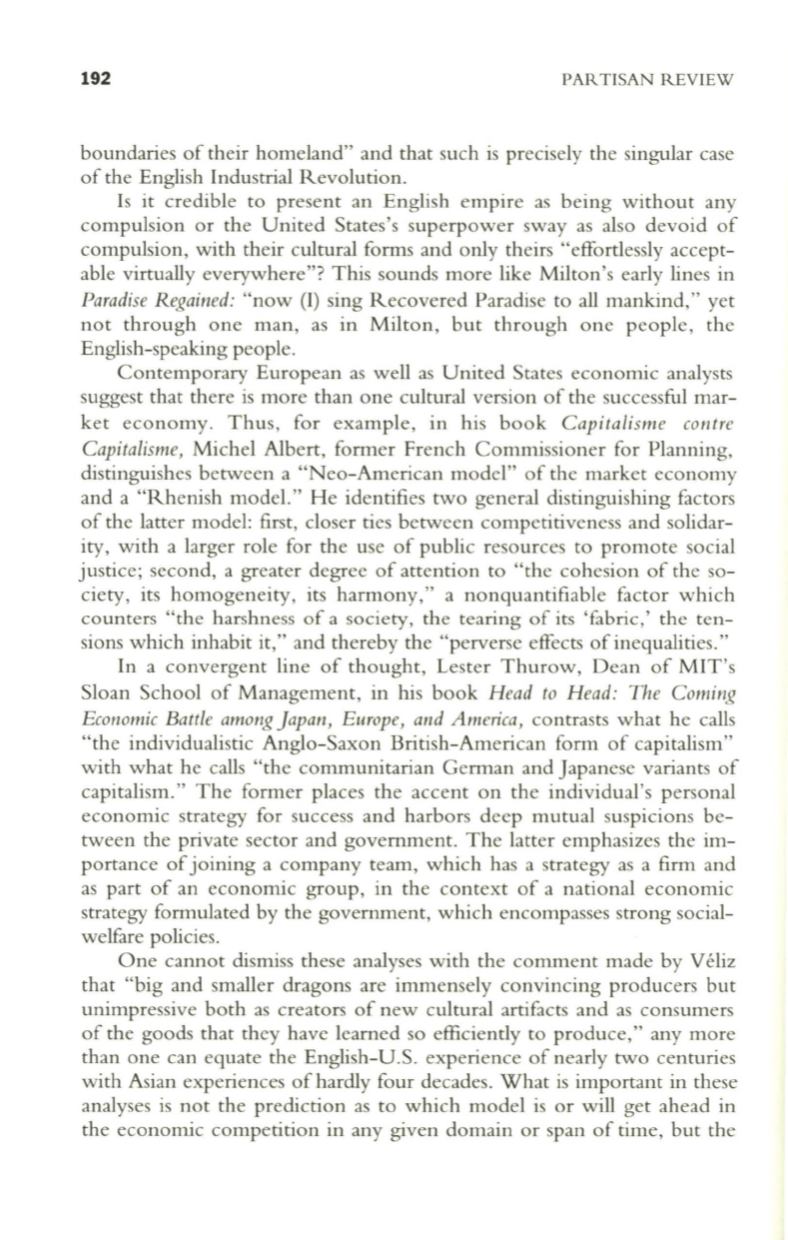
192
PARTISAN REVIEW
boundaries of their homeland" and that such is precisely the singular case
of the English Industrial Revolution.
Is it credible to present an English empire as being without any
compulsion or the United States's superpower sway as also devoid of
compulsion, with their cultural forms and only theirs "effortlessly accept–
able virtually everywhere"? This sounds more like Milton's early lines in
Paradise Regained:
"now (I) sing Recovered Paradise to all mankind," yet
not through one man, as in Milton, but through one people, the
English-speaking people.
Contemporary European as well as Uruted States economic analysts
suggest that there is more than one cultural version of the successful mar–
ket economy. Thus, for example, in his book
Capitalisme contre
Capitalisme,
Michel Albert, former French Commissioner for Planning,
distinguishes between a "Neo-American model" of the market economy
and a "Rhenish model." He identifies two general distinguishing factors
of the latter model: first, closer ties between competitiveness and solidar–
ity, with a larger role for the use of public resources to promote social
justice; second, a greater degree of attention to "the cohesion of the so–
ciety, its homogeneity, its harmony," a nonquantifiable factor which
counters "the harshness of a society, the tearing of its 'fabric,' the ten–
sions which inhabit it," and thereby the "perverse effects of inequalities."
In a convergent line of thought, Lester Thurow, Dean of MIT's
Sloan School of Management, in his book
Head to Head: The Coming
Economic Battle among Japan, Europe, and America,
contrasts what he calls
"the individualistic Anglo- Saxon British-American form of capitalism"
with what he calls "the communitarian German and Japanese variants of
capitalism." The former places the accent on the individual's personal
economic strategy for success and harbors deep mutual suspicions be–
tween the private sector and government. The latter emphasizes the im–
portance of joirung a company team, which has a strategy as a firm and
as part of an economic group, in the context of a national economic
strategy formulated by the government, which encompasses strong social–
welfare policies.
One cannot dismiss these analyses with the comment made by Veliz
that "big and smaller dragons are immensely convincing producers but
unimpressive both as creators of new cultural artifacts and as consumers
of the goods that they have learned so efficiently to produce," any more
than one can equate the English-U.S. experience of nearly two centuries
with Asian experiences of hardly four decades. What is important in these
analyses is not the prediction as to which model is or will get ahead in
the economic competition in any given domain or span of time, but the


